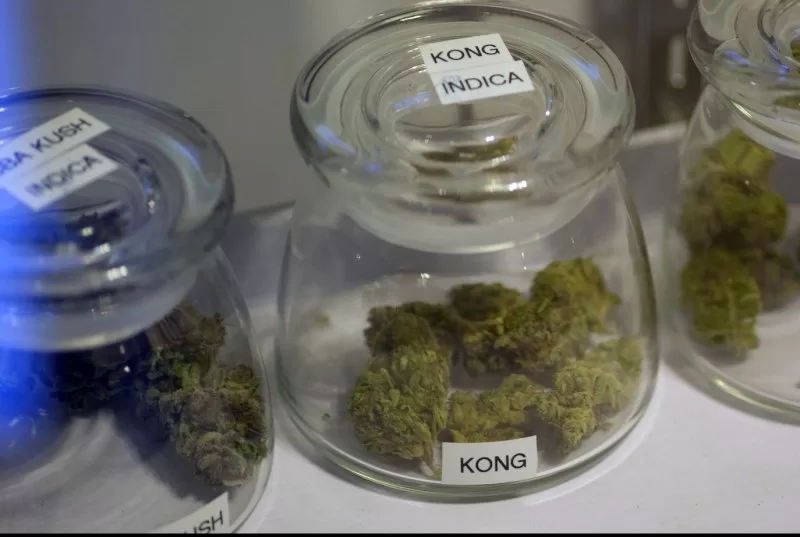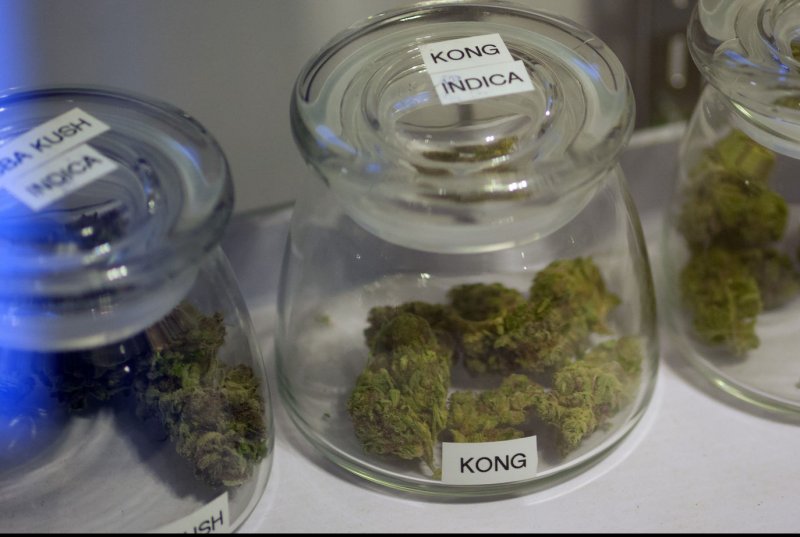1 of 3 | On Tuesday, adults at least 21-years-old will have the option to begin buying marijuana without the need for a medical card at one of 98 dispensaries after Ohio voters approved the new policy change last November. File Photo by Gary C. Caskey/UPI |
License PhotoAug. 5 (UPI) — This week the residents of Ohio will be able to begin buying marijuana for recreational purposes at select dispensaries across the state.
“We are stepping into a new future for Ohio where citizens will have access to safe products and communities will feel the benefits of this growing industry through tax revenue and job opportunities,” Ohio Cannabis Coalition spokesman Tom Haren wrote in an email to Ohio Capital Journal.
On Tuesday, adults at least 21-years-old will have the option to begin buying marijuana without the need for a medical card at one of 98 dispensaries after Ohio voters approved the new policy change last November.
Ohio’s Department of Commerce Division of Cannabis Control says on Tuesday it will issue its first round of 98 dual-use Certificates of Operation to eligible dispensaries statewide. It will then issue COO’s to all remaining dispensaries this week, as well.
As of Friday, six testing labs, 29 cultivators and 39 processors in Ohio received a certificate of operation from the state.
“A big reason we were able to get to this point ahead of the Sept. 7 deadline was due to the foundation laid through the state’s existing Medical Marijuana Control Program,” James Canepa, the division’s superintendent, told WLWT5 in Ohio.
The state got 230 applications to switch medical marijuana facility licensees to dual-use cannabis licenses. And 155 facilities — including 134 dispensaries — qualified for a provisional license needed as a placeholder until a final COO is issued.
“Since existing licensees had already met stringent requirements of that program, we anticipated this process to be rather smooth,” Canepa wrote. “They had already undergone many of the comprehensive checks as part of that process.”
But the division added once a dispensary gets its certificate, only then can it sell medical and non-medical cannabis products after meeting specific stock and staffing requirements. License applications must be approved or denied by Sept. 7.
In November, Ohio voters approved a ballot measure to legalize cannabis by 2,226,399 at 57% to the opposing 1,666,316 votes against at 42%.
In the United States, recreational marijuana is legal in 24 states and the District of Columbia. Fourteen other states allow medical marijuana.
States with recreational marijuana ballot measures this November are Florida, Idaho, Nebraska, North Dakota and South Dakota.
Notably, in a historic move, the U.S. Drug Enforcement Administration in April announced it was easing restrictions on marijuana to reclassify it as low-risk substance, removing its association with riskier drugs such as heroin and LSD, and acknowledging that cannabis has moderate to low risk for users.
That was followed in June when the American Medical Association voted 345-171 to decriminalize possession and the personal use of drugs.

